The Brutal Normality of Switzerland’s Sex Market
Geneva is not just a popular tourist location but an important hub for business, trade and political visitors — many of them male sex tourists.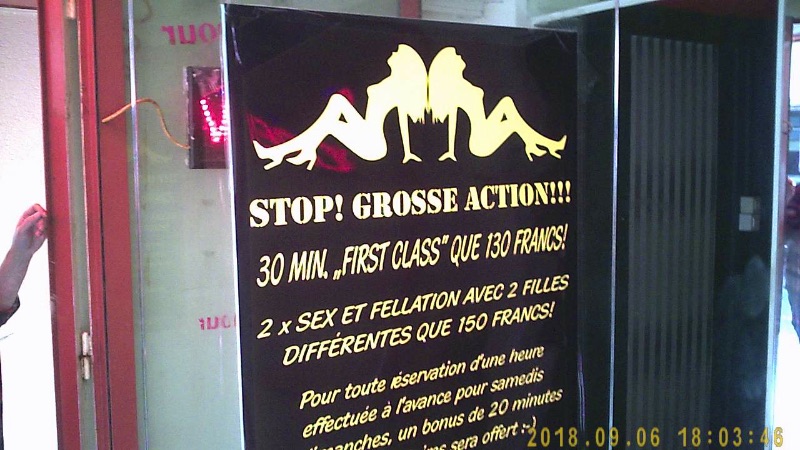 A brothel menu is displayed on Rue Rodo in Geneva. (Julie Bindel)
A brothel menu is displayed on Rue Rodo in Geneva. (Julie Bindel)
It is 8 a.m. and the rain is coming down in sheets and bouncing off the pavements. The streets are empty except for a dozen women and their pimps. Rue Sismondi, in the heart of the Pâquis district of Geneva, is known for prostitution, drugs and gang violence. It is also home to a number of migrant populations, and often referred to as Geneva’s “global village.”
I am in Switzerland to investigate the sex trade in this liberal country, famous for its perfectionism, precision and punctuality. The Swiss reputation for having a humane asylum system—in which the state recognizes the plight of those coming to Switzerland to escape poverty, violence and degradation—flies in the face of the country’s willingness to see women sold on its streets in broad daylight. These are women from desperately poor regions, such as Moldova, Romania, West Africa and Southeast Asia. The sex trade has been legal in Switzerland since 1942, and its prostitution laws and policies suggest that some forms of slavery are more acceptable than others among its supposedly liberal citizens.
One of the pimps, a young man wearing low-slung jeans and a baseball cap, greets me with a jolly “Bonjour, Madame!” while waving at a man driving a police car. There are regular spot checks by police in the street prostitution areas, but I am told they are checking for drug dealers and ignoring the sexual predators looking for women to buy.
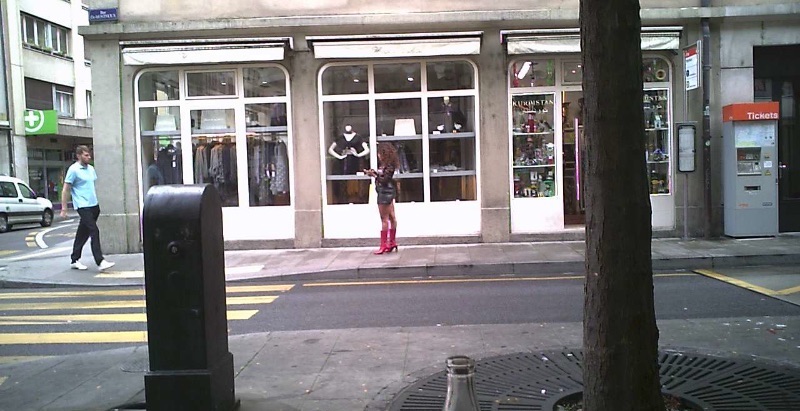
Geneva is the second largest city in Switzerland but has a population of just 200,000. Home to the United Nations, Red Cross and World Health Organization, Geneva is not just a popular tourist location but an important hub for business, trade and political visitors. Well over 2 million people visit the city every year. Many of them are male sex tourists.
I have been researching and writing about the global sex trade for 20 years and have visited numerous countries around the world to do so. But nowhere have I encountered such normalization of prostitution as I saw in Geneva—not even in Germany or the Netherlands.
Until 2013, it was perfectly legal for johns here to pay for sex with 16-year-old girls. That year, however, Parliament raised the legal age to 18, in line with other Western European countries, after pressure from feminists and child protection advocates.
In 2014, inmates of La Paquerette (a social therapy department for prisoners) were allowed to visit prostituted women in a local detention center near Geneva.
In 2016, businessman Bradley Charvet applied to his local municipality in Geneva for a license to open a “fellatio cafe”; Charvet is also involved with the Switzerland-based pimping website Facegirl. The cafe idea has not yet progressed to a venture, but the application stated that for 50 Swiss francs ($50), a customer could choose a woman from photographs on an iPad, then order her to give him a blow job with his cappuccino.
Plenty of organizations and individuals in Switzerland support this laissez-faire approach to prostitution. The largest direct service provider in Geneva, Aspasie, is a Red Umbrella-affiliated organization, which means it supports the decriminalization of the sex trade and is opposed to the abolitionist approach to tackle demand.
There is nowhere in the world where street prostitution has been legalized. However, in Geneva and Zurich, as well as elsewhere in Switzerland, selling sex on the streets is both tolerated and accepted. There are unofficial zones in Geneva where pimps know to take the women and where johns know to go to stalk their prey. The off-street sex trade is also prolific, with numerous brothels, massage parlors and saunas offering women for sale. Unless a complaint is made by a member of the public, the police turn a blind eye.
* * *
On my arrival in Geneva, I stop for something to eat in the gay area, only a short walk from my hotel in the heart of the red light district. I notice a table of lesbians sitting outside, smoking and laughing. As I finish my meal, they beckon me over to join them for a drink. I tell them what I am doing in the city and ask what they know about the local prostitution scene. They are involved with an LGBT rights organization and explain that some of the young gay men in the city are involved in the sex trade. I ask what they think about legalized prostitution and whether it works in Switzerland. “It used to be OK,” says Emma, a civil servant who grew up in the city. “But I understand that those were the days when local women sold sex. Today the problem comes with trafficking. Most of the women are from Romania and other such countries.”
Genevieve tells me that she thinks legalization is the “only way” to properly handle the sex trade: “Why shouldn’t it be treated like any other business?” She says that people in Switzerland consider themselves liberal and tolerant. I wonder if they know exactly what they are tolerating.
After watching activities in the prostitution area in the early hours, I head off the next morning to Venusia, an infamous brothel on the outskirts of town, to request an interview with Madame Lisa, a regular spokeswoman for the benefits of legalized prostitution. The street that houses the brothel is gray, ugly and near a busy road. As I approach the main entrance, two men walk out laughing, one making a sexual gesture to the woman waving them goodbye.
The brothel owner is not in the building, but I am taken into the reception area and asked to leave my name and contact details. I am told that Lisa will be in touch as soon as she returns. It is not quite midday and already the brothel is busy. Several women walk past me in the reception area, some coming to meet johns and others going into the private area beyond. It is difficult to tell the age of some of the women, but certainly none is over 25. Some are significantly younger. Most appear to be North African or Romanian.
Two doors away from Venusia is a smaller brothel. I would have missed it were it not for the john leaving the building, zipping up his jeans. “Au revoir!” shouts the young woman at the door, wearing a corset and impossibly high spiked heels. As she walks back in, I hear her mutter, “Connard.” It means asshole.
I press the intercom as I read the menu on the window. One hundred thirty Swiss francs ($132) buys full sex with two different women, plus a side order of fellatio. I tell the receptionist I am a reporter investigating legalization in Switzerland and ask if anyone would be interested in speaking to me. Both she and the women working there decline.
I have been told by a couple who run a Christian support service for prostituted women in Geneva to visit a Thai restaurant in the Paquis district, which is frequented by pimps and the women they sell. “They [the pimps] will talk to you,” says my contact. “Especially if they think there’s any money in it for them.” He is right. When I arrive at the restaurant at lunch time, the place is almost full—mainly with women wearing coats over classic street prostitution attire: hot pants, micro skirts, boob tubes and “hooker boots.” The women appear to be of a number of ethnicities, including Eastern European and West African. The men are almost all of North African appearance and under the age of 30.
“You want anything, lady?” asks one of the women, her accent strongly Eastern European. “She want something, she can come to me,” says one of the young men, meeting my eye and holding my gaze. “Anything here you like?” he asks me.
Taking advantage of the fact that I am suspected of being a potential sex buyer, I move into my cover story. “I am not here for myself but for my son,” I say. “He has been paralyzed since he was 15 and can’t have sex. He is desperate to have a normal experience with a woman, and I wanted to bring him somewhere where paying for sex is nothing unusual and not illegal.”
I say that my son attends a college in Geneva and that I can bring him to meet one of the women at her convenience. I ask how much it will cost. “Depends on what you want,” says the pimp. “A girlfriend? A fuck? Something special? There are different prices for different girls. Does he want a black one? I can get him a black one.” The pimp introduces himself as Ali, but I figure that’s not his real name. I tell him I will come back and see him after talking to my son about it.
Ali stares at me as I leave the cafe. I feel very uncomfortable. “Don’t go to the street looking for a woman; they all have diseases,” he says. “Mine are all tested. Every month I take them to the clinic and I pay. If you want, you can see their certificates. And these ones have proper documents. Some of the girls don’t even have passports.”
* * *
I walk around Rue Sismondi, the most notorious street for prostitution in the area. It is still raining, although less heavily, and at least 15 women stand on corners or walk up and down looking for trade. I see a commuter in a suit wander up to a very young-looking woman. He stands under her umbrella and smokes a cigarette. The john removes his wallet and points to the alley to the left, which is home to a large “gentleman’s club.” There are red velvet chairs in the windows, and posters showing women in bikinis lining the walls. It looks like a clip joint: an old-style brothel that sells overpriced alcohol, with the pimps regularly extorting money from the sex buyers. Several barely dressed women are sitting on red velvet thrones with a red light shining behind them. I ask the security man hovering outside the door what kind of a venue it is. He tells me it is for “les hommes à venir se détendre”—for “men to come to relax.”
* * *
That night I meet a contact who, for several years, has worked for one of the major human rights organizations based in the city. This person would not only lose his/her job if exposed as a whistleblower, but also would be vilified by colleagues and possibly blacklisted from other jobs within the sector. Under strict instruction not to reveal his/her identity, my contact gives me horrifying details of the prolific sexual exploitation perpetrated by so-called human rights officials within the city.
The whistleblower, whom I will call Jay, tells me that “Friday night is known as ‘ho’ night” within the office of this large organization. “The men in my team literally brag about going to prostitutes,” Jay says. “One of the roles in the team is to raise awareness about trafficking and irregular migration, but these guys go out and abuse them without any thought.”
Jay once confronted a colleague who was bragging in the office about a night he had enjoyed with an “oversexed Romanian,” laughing with another male employee that he was terrified his “dick would drop off.”
Jay asked how the man knew that she was not trafficked or pressured into prostitution. “We don’t have sex with the trafficked ones, just the ones that want to be there,” was the reply. “How do you know whether they are trafficked?” Jay persisted. “We ask them,” he said.
Jay tells me about an instance when several colleagues visited a brothel en masse. “They were bragging that five of them had sex with one woman in this place, and that she could not speak any English. When they were leaving, the woman was crying. One of the men said, without any [self-awareness] whatsoever, that she was probably upset because she wanted one of us to take her home.”
The regular profile of a trafficking victim, Jay says, is that of a young woman who has been promised a good salary, a work permit and the reimbursement of travel costs by an agent in her home country. The reputation of Switzerland as a democratic country with a good human rights record inspires trust in many women from Eastern Europe.
Jay tells me of planning to report these men to a senior manager, adding: “If I lose my job, I will take them to court. But I can’t sit back and let this continue.”
There is very little research on the numbers of men who pay for sex in Switzerland, but one 2008 study found that almost one-quarter (23 percent) of men between the ages of 17 and 45 have done so at least once. I meet Robert, who owns a small business and is originally from Paris. “I didn’t visit brothels when I lived in France,” he says. “But in Geneva, it is acceptable and almost even respectable. The [prostitutes] do things that are not considered nice for wives and girlfriends to do.”
I ask Robert why he pays for sex, aside from being able to demand oral and anal sex from the women, and he tells me something I have heard from johns countless times in numerous countries. “If I take a girl out,” he says, “buy her dinner and do all the flirting and things, but at the end of the evening she tells me she doesn’t want sex, I have wasted my time and a lot of money. So why don’t I just go straight for the sex? That way, she has earned good money and I am happy.”
The legal definition of prostitution in Geneva is “the act of selling sex.” The buyer is invisible, both in legislation and public awareness. Trafficking is increasing, but, according to johns such as Jay’s colleagues and Robert, the assumption is that these women somehow pinpoint Geneva from their tiny villages in Senegal, Hungary, the Dominican Republic, Thailand or Ukraine and flock here to work in the sex trade. Switzerland has some of the most stringent immigration and labor laws in the world, but these women, johns seem to think, miraculously manage to get Swiss “work” permits and then choose prostitution over every other possible source of revenue.
Taina Bien-Aimé is co-director of the Coalition against Trafficking in Women (CATW), a New York City-based international nongovernmental organization. “The Swiss government’s indifference to the suffering of trafficked and prostituted women is abhorrent,” says Bien-Aimé , who was raised in Geneva. “Officials hide behind the notion of choice and a woman’s consent to being bought and sold in the Swiss sex trade. But it would not take rigorous investigations to uncover that a disenfranchised young Nigerian woman from Edo state, for example, would have difficulty finding Zurich or Geneva on a map, let alone purchasing a one-way ticket to a brothel or a ‘sex box’ without a trafficker or pimp owning her fate.”
* * *
Trafficking is a much bigger problem in countries such as Germany, the Netherlands and New Zealand, which have legalized, or “normalized,” sex trades, than in those that have adopted the Nordic model, in which the sex buyer is criminalized and the prostituted person is decriminalized and assisted out of prostitution.
Switzerland is a primary destination for sex traffickers in Europe. Victims originate mainly from Central and Eastern Europe, but also from Thailand, Nigeria, China, Brazil, Cameroon, the Dominican Republic and Morocco.
In recent years, the numbers have increased. The women (and, in far fewer numbers, men) operate using newspaper advertisements, cellphones and apartments rented by pimps. Some pimps accept credit cards as payment—because, after all, this is a legitimate business.
The increase in free movement of people between Switzerland and the EU is often cited as being integral to the increase of prostitution in the country. From what I saw and heard while there, however, it is more likely that because men face no consequences for paying for sex, they are more likely to do so. To meet the increasing demand, traffickers import women from poor and war-torn nations.
According to CATW, around 14,000 women are sold into the Swiss sex trade, with approximately 70 percent coming from other countries. A report estimates that 350,000 men—about 20 percent of the population—purchase sexual acts. The Swiss sex trade reaps an estimated 3.5 billion Swiss francs ($3.5 billion) in profits per year.
Across Switzerland, brothel raids turn up trafficked women from Brazil and Eastern Europe. As in other countries with legal brothels, the illegal side of prostitution does not diminish with legalization. Instead, it often grows.
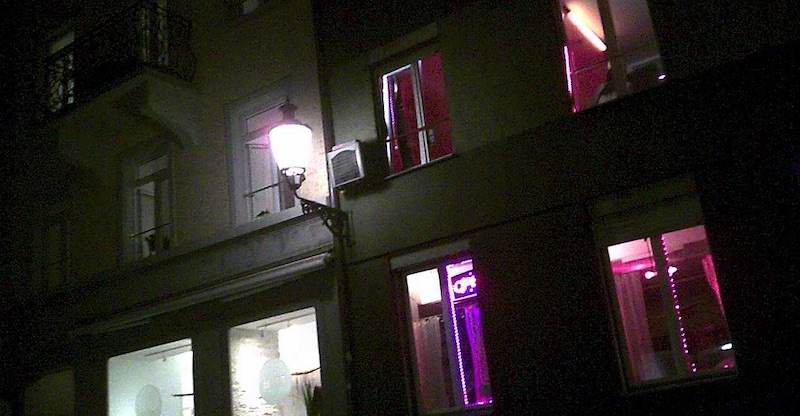
Switzerland legalized its sex trade almost 80 years ago—yet another piece of evidence that normalizing prostitution helps no one except pimps and other exploiters. In 2016, a trafficker was convicted of trafficking 80 women from Thailand, who were sent to brothels in the cantons of Bern, Solothurn, Lucerne, Basel, St. Gallen and Zurich. The women were kept under lock and key and forced to service numerous sex buyers to pay off enormous debts to the pimps who had transported them from their home country.
There are also significant levels of violence committed against the women by pimps and johns. One case in 2017 involved an investment banker who murdered a prostituted woman, stuffed her body in a suitcase and placed the suitcase in a wine cellar in his cellar.
Conversely, to date there has been only one murder of a prostituted person by a pimp or john in Norway, and none in the other seven countries that have criminalized paying for sex.
* * *
On the train from Geneva to Zurich, I talk to Anna, a woman in her 20s who attends a university in the capital. She asks me what I am doing in Switzerland. I tell her I am investigating the sex trade. She is instantly attentive, asking, “Does that include sugar baby stuff?”
So-called sugar-baby hook-ups are largely facilitated by the website Seeking Arrangement, which boasts more than 10 million users across 139 countries, with substantial numbers of Switzerland-based men on its books. Older men—“sugar daddies”—target young students in need of money—“sugar babies”—as “dates.” Many desperate young women even auction their virginity on the site. It is a classic example of the sanitization of the sex trade.
“I have three friends who do this,” Anna tells me on the train, looking upset. “They tell me it is not prostitution, but all of them have had sex with the men they hook up with.” The men are “much older,” and one friend described her date as “repulsive.” Anna seems worried about the safety of “sugar-dating.” Most shockingly, the university her friends attended had “dating websites” on its list of suggested casual jobs for students.
* * *
In Zurich, I stay at a hotel within walking distance of the notorious “sex performance box” zone—or, more accurately, the drive-thru outdoor brothel on the outskirts of the city, near the main railway line in Sihlquai.
As I check in, the hotel manager tells me that men often stay there to “have a good time” in the prostitution area. “They are not Swiss, maybe some English,” he tells me. “Perhaps you don’t have anything like this at home? Here we are very open about sex in Switzerland. Very liberal.”
I had been hearing about the so-called sex performance boxes since they were raised in 2011 as a potential solution to the problems inherent to street prostitution. The following year, just over half (52 percent) of citizens voted in favor of Zurich spending $2 million to set up the zone. The intention was to make street prostitution safer and reduce trafficking and other forms of violence. The boxes opened in 2013; so far, there is no evidence that trafficking or violence has been reduced.
I was told it is impossible to visit the drive-thru brothels without my own car. Later in the evening, however, as the facilities open, I ask a taxi driver who speaks good English—and who appears to be somewhat of an expert on prostitution—to drive me there and to ask the security people if I can speak with the women, or be shown around.
As the taxi driver speaks to members of the outreach team at Flora Dora, a government funded nongovernmental organization that provides condoms and safety tips to the women, I watch cars drive through, counting 22 cars entering—and several leaving—during the 15 minutes we are inside the area.
Some of the women in the outdoor brothel enclosure appear intoxicated, and many are thin and frail in appearance. Prostitution takes a terrible toll on women’s physical and mental health. One survey of 193 prostituted women in Zurich (5 percent of whom were registered with the government) found that more than 50 percent suffered psychiatric ailments such as depression, anxiety, post-traumatic stress disorder, eating disorders and psychosis, as well as alcohol dependency. By comparison, 18 percent of nonprostituted women suffer psychiatric ailments.
Prices are around 50 Swiss francs for “hand relief,” full sex is $100; and anal sex is $200.
I watch as the johns drive into the small, circular park, cruise the women from their cars and then wave to whichever woman takes their fancy. The women are standing outside of door-less, alarmed buildings in which they keep their belongings and change into skimpy outfits from their “day clothes.”
Once the john has chosen a woman, she joins him in his car, and he drives into one of the teak-colored wooden garages that surround one side of the cordoned-off area. Each has space for a single car; johns on foot or bikes are not allowed in.
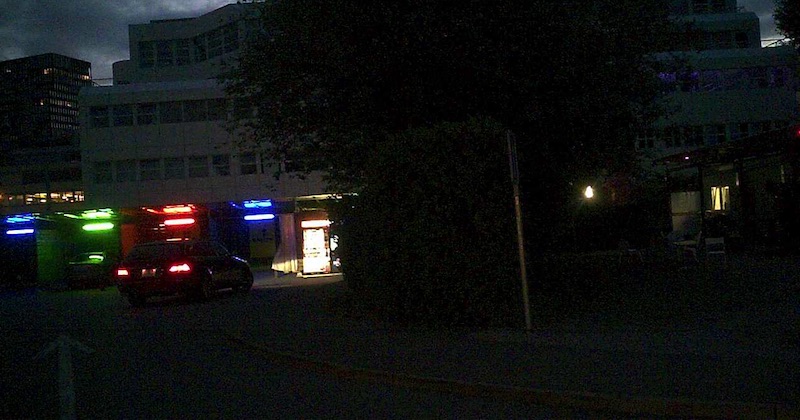
Each of the 10 boxes is lit up in red, green or yellow. A vending machine, which sells condoms, lubricant, soft drinks and chocolate bars, sits at the end of the row, next to an ATM. Posters advocating safe sex decorate the walls.
The boxes contain nothing but a panic button and a waste bin for condoms and tissues. There are no surveillance cameras for the johns to worry about. I assumed the lack of security cameras are due to the fact that johns might be scared off if they were filmed entering and leaving, but I am told by various sources that police and city officials followed advice from those running similar zones in Utrecht and elsewhere, and decided that cameras are inadequate, because a woman will already have been assaulted by the time the footage is viewed, and that an on-site security presence is the best deterrence to violence.
The prostituted women in the enclosure have access to on-site social workers, and police increase patrols around the area to protect the women when they enter and leave. Clearly, the authorities are under no illusion about the dangers inherent to prostitution, even in such a public, monitored space.
I am told that no one from Flora Dora is able to speak to me, and I am not allowed to approach either the women or the johns. I am handed the leaflets the organization gives to the prostituted women, which provide tips on how to identify violent johns. The materials are in Spanish, Hungarian, Bulgarian and Romanian.
Facilitating the “right” of men to pay for sex is an expensive business. The Swiss government spends $800,000 each year maintaining the booths, which includes the on-site security and social services.
The drive-thru brothels were deemed a great success by the Swiss during the summer. But observing the bins filled with condoms and the clinical organization of the area, all I can think about is what a lot of public money is being spent by the Swiss government in order to make it easier for men to pay for sex with financially desperate women. I wonder how many women could be supported out of prostitution with the amount of money spent so far on these facilities.
Roughly 3,000 women are registered as prostitutes in Zurich—a number that continues to increase, although rising competition among the women has led to a sharp drop in “service” prices. The Altstetten district of Zurich and one road where street prostitution was allowed was closed when the drive-thru brothel site opened, and street prostitution is illegal in most areas of the city. The same year the drive-thru brothel opened, street prostitutes in Zurich had to start buying nightly permits, at a cost of 5 francs each, from a vending machine installed in the area. In addition, since 2003, legislation has been put in place to ban “window prostitution.”
After my visit to the drive-thru brothels, the taxi driver takes me to see one of the city’s 300 registered brothels. This one is on Langstrasse (Long Street), the most notorious red-light area in the city. The four-story building has five brightly lit windows per floor, through which young women in underwear are visible. Although the women are clearly being advertised, this is different from what is known as “window prostitution,” which is distinctive in that the women are always on ground level and in single-occupancy brothels, as opposed to multiroomed premises.
“I get many customers asking me to take them there,” says my driver. “The women are out on the streets all day and night, but the ones from that house [the brothel] come out onto the street around 10 p.m. to meet customers face to face and then take them inside.” I ask if the police ever patrol the street, and he tells me, “You see them sometimes, but they are just looking for drugs or violence.”
“This is Langstrasse, very dangerous,” the taxi driver says, on seeing a group of men spill out of a sex club, drunk and shouting loudly at passers-by. “At 10 o’clock at night it’s very dangerous.”
I ask if he knows where the women on the streets are from. “They come from Poland, Italy, France and Romania, Morocco. Swiss ladies, not much.”
The taxi driver tells me that there is “definitely more” prostitution on the street, and more visible customers since the sex boxes were opened. “But it is safer for the ladies,” he says. I ask him how he knows it is safer for the women to be in the drive-thru enclosures rather than the streets. Who has he heard it from? “I don’t know if anyone told me,” he says, “but it must be.”
I head off to meet Ben (not his real name), a British police officer who until recently worked as a consultant for an anti-trafficking organization. Ben knows a lot about prostitution: He has been involved in policing what used to be known as “vice” for 30 years. He has led a number of operations to detect international pimping operations.
We talk in a busy bar close to Niederhof, the cobbled street known to be one of the main street prostitution zones. “The girls are young,” says Ben, “maybe no older than 18, 19. And they are all controlled in one way or another. The pimps are in the building every day. If they call themselves landlords, it still doesn’t alter the fact that they are living off prostitution.

“So Niederhof is a street prostitution area which is always busy,” Ben continues. “Even since the sex boxes. In the street it is dangerous for the girls.”
I see dozens of prostituted women, openly touting for johns on the streets. The installation of the sex boxes has clearly not done what the government promised—remove or drastically reduce street prostitution in other areas of the city.
During my time with Ben, I hear about the growth of temporary pop-up salons in subleased apartments or hotels, and Airbnb brothels. According to Ben, legalization provides the perfect cover for the illegal trade. The small owner-occupied brothels in New Zealand, for instance, do not need a license to operate, so long as no more than four individuals sell sex from the premises at any one time. In Zurich, since July 2017, mini-salons with up to two rooms in any one premise are exempt from licensing requirements. These salons are allowed in residential areas where there is currently a ban on licensed brothels.
“Let’s face it,” Ben says, “pimps know where they can make lots of money, and it isn’t going to be in Sweden.”
* * *
The most vocal campaigners for prostitution and trafficking are those who argue for blanket decriminalization of the sex trade and against the Nordic model.
For example, Aspasie is part of the pro-prostitution Global Network of Sex Work Projects, which is funded by the Open Society Foundation, brainchild of George Soros. Based in Geneva, Aspasie campaigns nationwide for the abolition of laws against pimping.
The Don Juan Project in Switzerland was developed and funded by Swiss AIDS Control. It is considered a best-practice model. The education program run by Don Juan in a number of Swiss cantons focused on condom use and “safe sex,” not on dissuading johns to stop paying for sex in the first place, a strategy that has proved successful in Nordic model countries.
Janice Raymond, in her 2013 book, “Not a Choice, Not a Job,” wrote about Don Juan’s report of its “success” with its “client re-education” project: “The wording of the Don Juan report is interesting. Of the 800 prostitution users who came into the tent and were found not to use condoms regularly when buying women in prostitution, about two-thirds said they would consider changes in their behaviour. What they weren’t asked to consider was to stop buying women in prostitution.”
But alongside other countries that have legalized their sex trade, such as the Netherlands, Germany and some states in Australia, the feminist abolitionist movement is beginning to emerge.
I meet Ursula Nakamura-Stoecklin at a Zurich train station. She is a retired medical professional and is involved in various women’s groups in and around Basel, which is Switzerland’s third most populous city, after Zurich and Geneva.
“The debate about sex-work versus abolition is boiling in Switzerland at the moment,” she tells me. “In some women’s groups, we dare not take it up, as it may well divide us. In June, the influential coordination of different women’s organizations by Frauenzentrale Zurich (Zurich Women’s Centre) strongly voiced the support of the Nordic model, which decriminalizes those selling sex, whilst criminalizing the johns.”
In June, this small nongovernmental organization launched its campaign for a ban on prostitution, and the introduction of the Nordic model. A video by the group has been circulated throughout Switzerland and beyond. “But still most of the media is against us,” Nakamura-Stoecklin says, “with different organizations that are pro-prostitution, [along with] police, saying it is too expensive to arrest the johns.”
It is difficult to see how much more expensive this strategy would be than the massive expense of maintaining the so-called sex boxes—which constitute merely a fraction of the sex trade across the city.
“These [pro-prostitution] organizations close their eyes to the fact that around 80 percent of the prostitutes are victims of sex trafficking,” Nakamura-Stoecklin says. “I simply cannot understand this blindness. We have one national organization, FIZ, which does an excellent job helping women to get out of the claws of traffickers. They have a specialized migrant section, which gives the women protection. But this organization is a strong advocate of prostitution by arguing that in [countries that have adopted the Nordic model], clandestine crimes against these women have increased.”
It is almost always the same story, Nakamura-Stoecklin says. “We hear it on TV and see it in the newspapers, but still people here think our system works. A poor woman from Moldova or somewhere, she wants to get a better job, be a teacher or something, and was promised a good job in Switzerland. She leaves her family in Moldova and she arrives here, and she lands in a brothel and she cannot get out. Why don’t Swiss people realize what is happening here?”
My trip to Switzerland is coming to an end. The window brothels, sex clubs, strip joints, street procurement and four-story brothels are all operating with impunity, with the numbers of women being procured into prostitution growing, and the traffickers, pimps and johns arrogantly going about their business, with little fear of condemnation or criminalization. I reflect on how little I knew previously about how prevalent and normalized the sex trade is here, despite my years of intensive research and reporting on the global sex market.
The normalization of the Swiss sex trade comes down to entrenched and long-term legalization.
The stereotype is that the Swiss like order, rules and cleanliness. But it is impossible to sanitize prostitution—no government can. The Swiss indifference to harm and violence perpetrated against women in the sex trade comes from a long official history of misogyny and sex discrimination. Swiss women gained the right to vote in federal elections in 1971, and the last canton that granted women the vote on local issues was Appenzell, in 1991. If a government resists seeing women as full human beings deserving of equal voting rights, it will certainly resist looking at the sex trade as a manifestation of inequality and violence against women.
To tackle its prostitution problems, the Swiss must look to France for its law targeting sex buyers and providing protection for prostituted women. Its other neighbor, Germany, is the worst example to follow, where legalized prostitution continues to generate massive human rights violations for the profit of the state, including dozens of murders of prostituted women since 2002.
What my anonymous contacts in the worlds of human rights and law enforcement told me during my trip left me further convinced that legalization of the sex trade results in an increase in both legal and illegal sex markets, which in turn leads to further normalization of prostitution and the devaluation of women in Switzerland. Acceptance of the sex trade is a green light to traffickers and other exploiters, and at the same time, encourages a laissez-faire attitude among the police.
“I can see why [my colleagues] have ended up convincing themselves it is OK to pay for a foreign prostitute,” Jay, from the human rights organization in Geneva, told me. “They probably think it is just the same as being served in a restaurant by a Romanian.”
In the meantime, numbers of women trafficked into and throughout Switzerland increase. The spotlight needs to be firmly on this country. So far, Switzerland has elicited the least attention and outrage from the feminist abolitionist movement than anywhere else in the world.
For all that Switzerland presents itself on the international stage as progressive and humanitarian, its disregard of the human rights abuses being perpetrated every day against prostituted women is nothing short of a disgrace.
Your support matters…Independent journalism is under threat and overshadowed by heavily funded mainstream media.
You can help level the playing field. Become a member.
Your tax-deductible contribution keeps us digging beneath the headlines to give you thought-provoking, investigative reporting and analysis that unearths what's really happening- without compromise.
Give today to support our courageous, independent journalists.

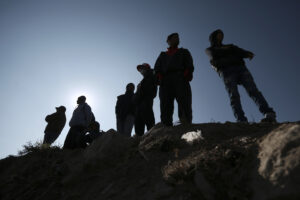

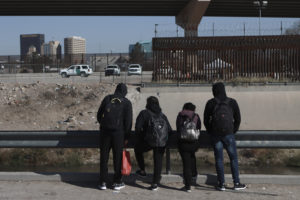
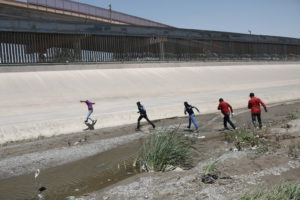
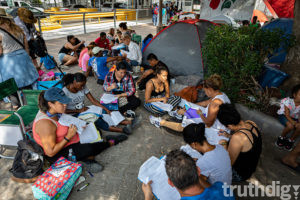



You need to be a supporter to comment.
There are currently no responses to this article.
Be the first to respond.